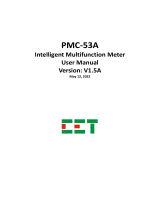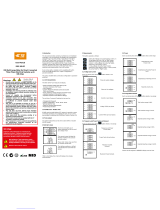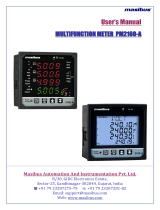
6
4.1.4 Analog Input .................................................................................................................. 34
4.1.5 Analog Output ............................................................................................................... 35
4.2 Power and Energy .................................................................................................................... 35
4.2.1 Basic Measurements ..................................................................................................... 35
4.2.2 Energy Measurements .................................................................................................. 36
4.2.3 Interval Energy Measurements (Firmware V2.00.00 or later) ...................................... 36
4.2.4 High-speed Measurements ........................................................................................... 36
4.2.5 Demand Measurements ............................................................................................... 36
4.2.6 Max./Min. per Demand Period ..................................................................................... 37
4.3 Power Quality ........................................................................................................................... 37
4.3.1 Phase Angles ................................................................................................................. 37
4.3.2 Power Quality Parameters ............................................................................................ 38
4.3.3 Unbalance ..................................................................................................................... 39
4.3.4 Symmetrical Components ............................................................................................. 39
4.3.5 Deviation ....................................................................................................................... 39
4.3.6 Supply Voltage Dips/Swells and Interruptions .............................................................. 39
4.3.7 Transients ...................................................................................................................... 40
4.4 Setpoints .................................................................................................................................. 40
4.5 Logical Module ......................................................................................................................... 42
4.6 Logging ..................................................................................................................................... 43
4.6.1 Max./Min. Log ............................................................................................................... 43
4.6.2 Peak Demand Log ......................................................................................................... 43
4.6.3 Interval Energy Recorder (IER) Log ................................................................................ 44
4.6.4 Waveform Recorder (WFR) Log ..................................................................................... 44
4.6.5 PQ Log ........................................................................................................................... 45
4.6.6 SOE Log ......................................................................................................................... 45
4.6.7 Data Recorder (DR) Log ................................................................................................. 45
4.7 Time of Use (TOU) .................................................................................................................... 46
4.8 Time Synchronization ............................................................................................................... 47
4.9 On-board Web Server ............................................................................................................... 48
4.10 Meter Email ............................................................................................................................ 49
4.11 Ethernet Gateway ................................................................................................................... 49
Chapter 5 Modbus Register Map ............................................................................................................ 51
5.1 Basic Measurements ................................................................................................................ 51
5.2 Energy Measurements ............................................................................................................. 53
5.2.1 Total Energy Measurements ......................................................................................... 53
5.2.2 TOU Energy Measurements .......................................................................................... 53
5.2.3 Interval Energy Measurements ..................................................................................... 55
5.3 Pulse Counter ........................................................................................................................... 55
5.4 Harmonic Measurements ......................................................................................................... 55
5.4.1 Fundamental (Displacement) Measurements .............................................................. 55
5.4.2 Harmonic Measurements ............................................................................................. 56
5.5 High-speed Measurements ...................................................................................................... 57
5.6 Demand Measurements ........................................................................................................... 57
































